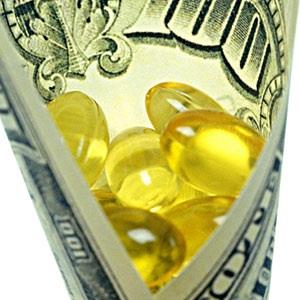`By MSN Smart Spending editor Thu 5:07 PM
 The average American who regularly takes medication spends nearly $760 a year out of pocket on prescription drugs.
The average American who regularly takes medication spends nearly $760 a year out of pocket on prescription drugs. That’s
a staggering figure, considering some 49% of consumers take at least
one prescription drug, according to the Centers for Disease Control.
Costs aren’t expected to get any better when Obamacare rolls out at the
start of next year. Consumers who purchase the lower-cost bronze and
silver plans on the exchanges may see their out-of-pocket prescription
costs increase an average of 34%, according to a recent analysis by
HealthPocket.
That’s
a staggering figure, considering some 49% of consumers take at least
one prescription drug, according to the Centers for Disease Control.
Costs aren’t expected to get any better when Obamacare rolls out at the
start of next year. Consumers who purchase the lower-cost bronze and
silver plans on the exchanges may see their out-of-pocket prescription
costs increase an average of 34%, according to a recent analysis by
HealthPocket. But there are some steps you can take to cut your prescription drug costs.
1. Shop around
Calling several pharmacies to compare prices could yield huge savings. Prices at different stores vary more than four-fold, according to a recent study by Consumer Reports. The study found the best prices at warehouse stores like Costco and at local, independent pharmacies. (Experts recommend filling all your prescriptions at one store so that the pharmacist can monitor potential interactions.)
2. Buy in bulk
Most pharmacies will offer a discount for filling a three-month prescription rather than a 30-day supply. You may be able to save even more by buying the 90-day supply via an online drugstore. But before ordering online, make sure the site is legit by looking for a VIPPS (Verified Internet Pharmacy Practice Sites) seal. While it may be tempting to order drugs cheaply from overseas pharmacies, experts say it’s unsafe (and illegal) to do so.
3. Split your pills (with doctor approval)
Larger-dose pills often cost the same as smaller-dose pills. Ask your doctor whether the drugs you’re on can be safely split. (Typically uncoated, scored pills are good candidates.) Spend $5 on a pill splitter -- and your prescription will suddenly last twice as long.
4. Clip coupons
You may not find coupons in the Sunday paper for prescription meds, but they’re available if you know where to look, says Stephanie Nelson, who runs CouponMom.com. Nelson says you can download coupons worth anywhere from a few bucks up to $100 from some manufacturers’ websites. Pharmaceutical reps also often leave coupons with doctors or pharmacists to give out on request, so be sure to ask if any are available when you get a new scrip.
5. Use pre-tax dollars
Nearly 90% of large employers’ benefit plans allow workers to set aside pretax dollars for medical expenses in a flexible savings account, but only 23% of employees actually use the accounts, according to Mercer. Big mistake.
Depending on your tax bracket, using pre-tax dollars for your prescriptions and other medical expenses could save you to 20% to 30%. Just be careful to estimate how much you’ll spend in a year, since you forfeit unused cash at the end of the year.
6. Get it for free
Some large supermarket chains like Publix will fill basic antibiotic prescriptions like amoxicillin for free. "Just go up to a pharmacy and ask for a list of which drugs they give out for free," Nelson says.
7. Go generic
Ask your doctor if it’s safe for you to switch to the generic version of any medication you take. Making the switch can save you 20% to 80% on a prescription. Wal-Mart, Target, and some grocery chains offer many generic prescriptions for as little as $4.
8. Stockpile samples
When your doctor writes a new prescription, ask whether she has any samples you can try first. This way you get a few pills for free, plus you can make sure you don’t experience any side effects before you pay to fill the entire subscription. "Many doctors are very willing to provide you with extra samples if you ask for them," says Brandy Bauer, a spokeswoman for the National Council on Aging. Do keep an eye on the expiration dates for your meds, because some drugs lose potency if they’re kept unused for too long.
9. Tap drug-maker assistance programs
Do you qualify for the low-income assistance programs offered by drug manufacturers and nonprofits? It’s worth looking into. The income threshold for these is often much higher than the threshold for public assistance via Medicaid or other state sponsored programs. Plug the name of your prescription and diagnosis into NeedyMeds.org to see if you qualify. "Check back regularly, because we’re always adding new programs," says the site’s administrator, Richard Sagall.
10. Get a discount card
Many organizations such as AAA and AARP offer drug discount cards to members, and others can be downloaded for free online. Such cards are only good for medications not covered by insurance, but a ConsumerWorld study last year found such cards can save users up to 70% on certain meds. Look for a no-cost card that does not require registration.
No comments:
Post a Comment